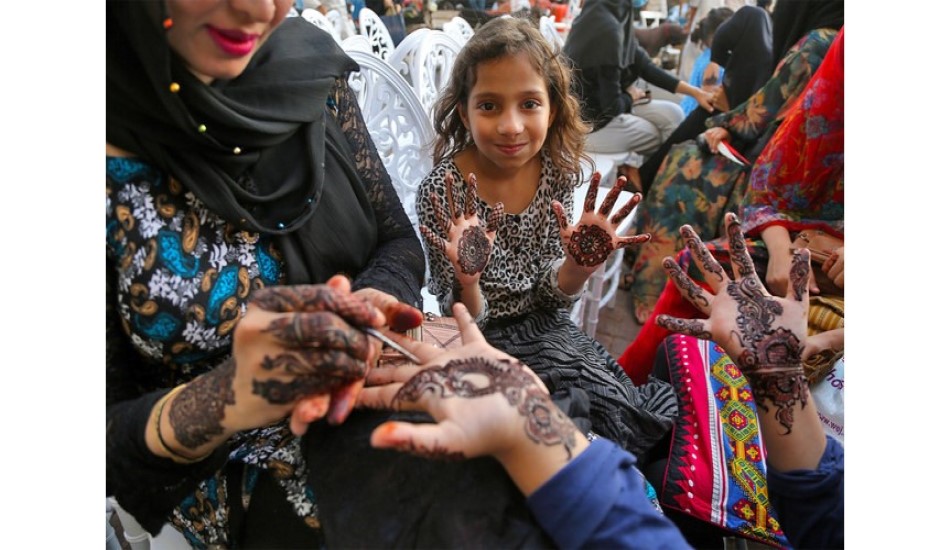Pakistan’s Image on the Global Stage has deteriorated. Find out the global image of Pakistan and the role of media in portraying the image of Pakistan.
For a positive international image, countries must have a favourable perception within the global community. The concept of “image” emerged in the 1950s and can be defined as the public’s opinion or mental representation of something, forming an impression or idea. However, the question arises: Can this image be restored entirely? According to Professor William Benoit’s “Image Repair Theory,” an image can be improved but not entirely restored. While a complete transformation may be complex, various approaches, such as psychological warfare and media diplomacy, can enhance a country’s image.
Pakistan’s Current Global Image
Turning the spotlight to Pakistan’s image, it is imperative to enhance it, particularly due to the extensive association with terrorism over the past few decades. Pakistan has been labelled as a state supporting terrorism and providing shelter to national and international terrorists. Despite being on the front lines of the global war on terror, Pakistan has paid a toll, with approximately 80,000 lives lost. Most of these casualties occurred during the US-led “war on terror” from 2004 to 2013.
The West views Pakistan as an unreliable ally, often overlooking its sacrifices. This biased perception of Pakistan, an Islamic state, perpetuates Islamic radicalism, racism, and religious biases. Pakistan continues to grapple with challenges, including terrorism, an unstable economy, precarious law and order, and weak governance. Amidst these challenges, it can be argued that restoring Pakistan’s global image is the most crucial.
Through its image, a nation shapes the way people perceive it. Pakistan does not enjoy the status of a soft power state. Foreign media, international think tanks, the global academic community, and even government representatives consistently portray Pakistan as a “problematic” state. Pakistan finds itself entangled in an international media war, and what’s concerning is that it appears to be losing this battle. Virtually all significant global and national news outlets and analyses about Pakistan tend to be pessimistic or menacing.
Pakistan has failed to utilize any prominent global media platform to counter this onslaught and respond to this unrelenting negative portrayal. As former Information Minister Javed Jabbar puts it, “While not causing physical destruction, the media war, in a sense, is more pernicious. It erodes and distorts our true identity in the minds of billions of people exposed to foreign media.”
This disparagement poses a barrier to Pakistan’s relations with other countries, particularly the United States. Harnessing the power of print media positively can promote peace and facilitate understanding among conflicting parties. Consequently, the key to revitalizing and reconstructing Pakistan’s global image lies in effective media management and the strategic deployment of media diplomacy.
Many nations effectively utilise media diplomacy and achieve desired goals through its strategic application. For instance, it is widely acknowledged that the United States effectively employed soft power and media diplomacy to emerge victorious in making its image powerful. Let’s delve deeper into how these successful states harnessed media diplomacy as a dynamic and impactful tool.
How USA Uses Media Diplomacy

The United States has a rich history of media diplomacy and continues to employ it effectively to further its national interests. Back in 1917, following World War I, President Woodrow Wilson established a propaganda entity called the Public Information Organization. Its purpose was to influence the opinions of the global public regarding the war by disseminating propaganda through various channels such as films, newspapers, radio programs, posters, press releases, and public speakers.
Furthermore, the United States has maintained its soft power by utilizing social media to promote a positive image globally, especially through online educational seminars and NBA on TV. This approach allows the U.S. to project a friendly image to the international community.
How China Uses Media Diplomacy
In its February 22 issue, The Economist has focused its attention on the tweeting activities of Chinese diplomats. With increasing number of Chinese diplomats engaging actively on Twitter, they share updates about their daily work, post videos, and relay comments. This platform has become a convenient means for the public to stay informed about China. Some of these official accounts even function as “spokespersons” or media outlets, projecting a positive image of the country.
In the era of social media, this form of “diplomacy” represents a significant stride for Chinese diplomats who aim to foster a better and more comprehensive global understanding of China through effective communication.
China has achieved a calm and consistent ascent to alleviate the concerns of other nations and reassure them that its newfound strength poses no harm. Recognizing the anxieties stemming from its rapid rise and appreciating the benefits of a more gentle image. China has effectively extended its influence to nearly all corners of the globe. China has a global online shopping store Alibaba.com, cultivating friendships through non-interference and successfully diverting international attention away from issues like its non-democratic governance and indifference to Chinese disputes.
How India Uses Media Diplomacy
India has crafted the image of a “Shining India” and “Made in India” through social media, employing soft power and media diplomacy. India, with its “liberal democratic regime,” holds a distinct advantage over China in terms of global appeal and influence. Since the 1990s, India has been strategically employing soft power tactics, and these efforts have borne fruit in the form of strong and amicable ties with the world.
Moreover, India stands as one of the world’s most enticing hubs for the IT industry, a success story that has not only bolstered the nation’s economy but has also projected its soft power on the global stage through social media. India’s rich cultural diversity and its numerous ethnic communities serve as potent assets in its soft power arsenal. Travellers’ YouTube videos showcasing India’s diverse culture support this endeavour.
India’s long-standing online support of Israel has also endeared it to the Jewish community, with their media consistently upholding India’s reputation and its Bollywood making a significant impact worldwide.
How Should Pakistan Use Media Diplomacy
Pakistan urgently needs to enhance its utilization of electronic media. There is a pressing necessity to harness the power of media to cultivate a more favourable image in the minds of foreign audiences. In contrast, India effectively leverages media, including films, movies, and dramas, to exert cultural influence and shape a positive perception of themselves.
Through their cinematic productions, India is disseminating narratives highlighting Pakistan’s perceived brutality while portraying Indian extremists in a heroic light. For instance, in 2016, Bollywood produced a film called “Sarbjit,” which depicted an Indian spy involved in various terrorist activities in Pakistan as a national hero.
The film was distributed globally to convey that this individual, who had been sentenced to death by Pakistan, was an Indian hero. In addition to traditional media, short documentaries can also significantly portray a positive international image. Creating films depicting the remarkable stories of heroes like Sapahai Maqbool Hussain, who made profound sacrifices for their nation is essential. These films can be a powerful medium to convey a positive message to the global community. The Pakistani government should consider establishing agreements with foreign cinemas to showcase these movies in their respective countries.
So here comes the responsible role of Pakistan‟s natives on social media. They have to depict their traditions, their customs, and their beliefs in a very optimistic means to attract foreigners towards Pakistan, and through this approach, they can play a vital role in securing the national interests of their nation.
Twitter Diplomacy
Twitter Diplomacy is another phenomenon which means the use of Twitter in public diplomacy, the positive use of Twitter by government officials and the people of a nation to build a better image of Pakistan globally.
Conclusion
Pakistan holds significant geopolitical importance and is pivotal on the global political stage. However, it faces many internal and external challenges and is subjected to various forms of propaganda, hindering its ability to establish a favourable image and perception in the international community. To address this, Pakistan urgently needs to harness the power of soft power and media diplomacy to reshape the perceptions and opinions of outsiders.
Developing and effectively managing well-thought-out strategies is imperative to counteract propaganda through media channels or programs. These efforts are equally essential to achieve Pakistan’s objectives. The Pakistani government must prioritize implementing robust media diplomacy initiatives to enhance Pakistan’s image on the international stage.
Moreover, Pakistani youth should actively engage in this endeavour, as history has shown that the youth can significantly influence the destiny of nations. They can bring about positive transformations in Pakistan’s global image through active participation and unwavering patriotism.

